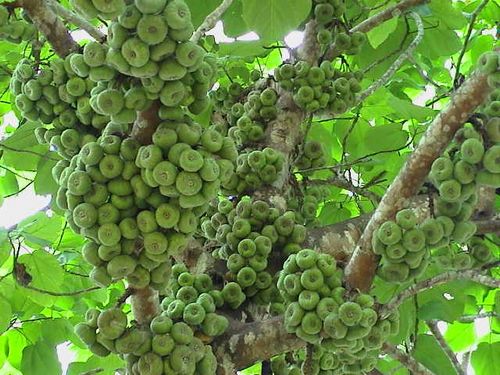Ficus and their pollinators are partners in a mutualism which is generally regarded as a classic model of coevolution. The association of Ficus and agaonid wasps was considered as a strict specificity for a long time: each Ficus species is pollinated by an obligate agaonid species, which can only breed in the fig species. At present, due to molecular methods and extensive investigations, exceptions to this one-to-one relationship have accumulated, including different Ficus sharing the same pollinator species and two or more agaonid wasps taxa associated with one fig species. However, previous researches just distinguished cryptic species or check pollinators in field, but did not quantify the reproduction by different pollinators’ species.
Dr. Yang Pei and her PhD supervisor Prof. YangDarong of Xishuangbanna Tropical Botanical Garden (XTBG) carried out studies to reveal the reproduction of agaonid wasps in non-host Ficus with introductions of pollinators Ceratosolen emarginatus and Ceratosolen sp. between their host trees Ficus auriculata and F. hainanensis which are two closely related and sympatric Asian fig trees.
Their studies showed that C. emarginatus, the obligate pollinator of F. auriculata, produced more numerous but smaller progeny in F. hainanensis, whereas Ceratosolen sp., the obligate pollinator of F. hainanensis, produced fewer but larger offspring in F. auriculata. These demonstrate that reproductive success is not necessarily greater on the normal host and that the figs influence pollinator offspring development, irrespective of whether the figs are the wasps’ normal host or not. C. emarginatus produced more offspring in F. hainanensis than in its normal host because C. emarginatus may have benefited from the slightly shorter style lengths in F. hainanensis, Ceratosolen sp. also had fewer offspring in F. auriculata figs, perhaps for the same reason. These results also imply that foundresses with longer ovipositors are at an advantage in these figs.
Their results also imply that, in addition to morphological constraints and tree-specific volatiles, reduced reproductive success in atypical hosts can be another factor maintaining host specificity. Moreover if environmental changes or human activities bring the two Ficus species into closer proximity, because of the differences in their ability to reproduce on the atypical hosts, host switching is more likely to take place in C. emarginatus than in Ceratosolen sp.
The study entitled “Exchange of hosts: can agaonid fig wasps reproduce successfully in the figs of non-hostFicus?” has been published online in Naturwissenschaften, doi: 10.1007/s00114-012-0885-5

Ficus auriculata (Image by YANG Pei)

